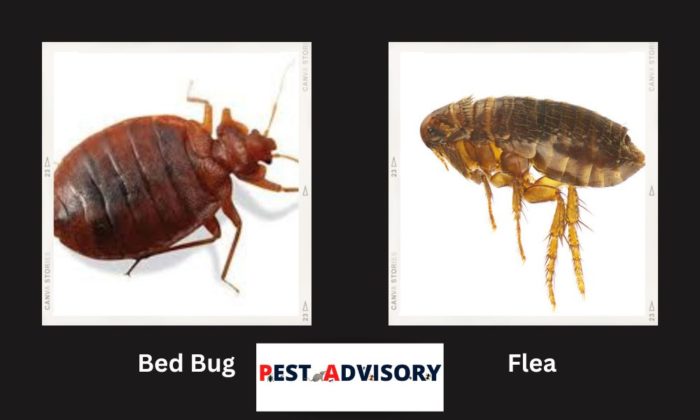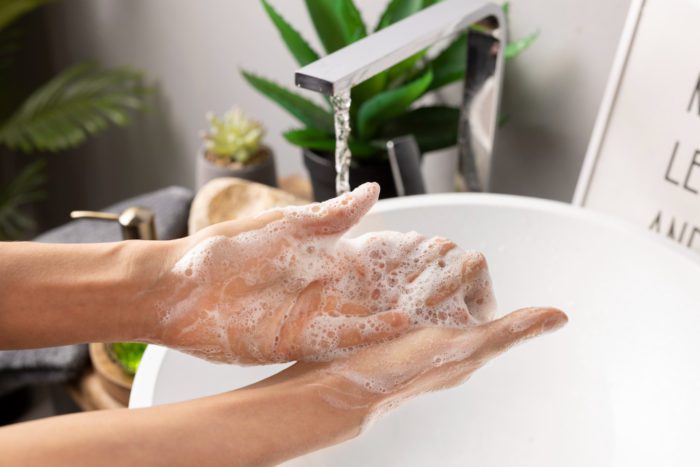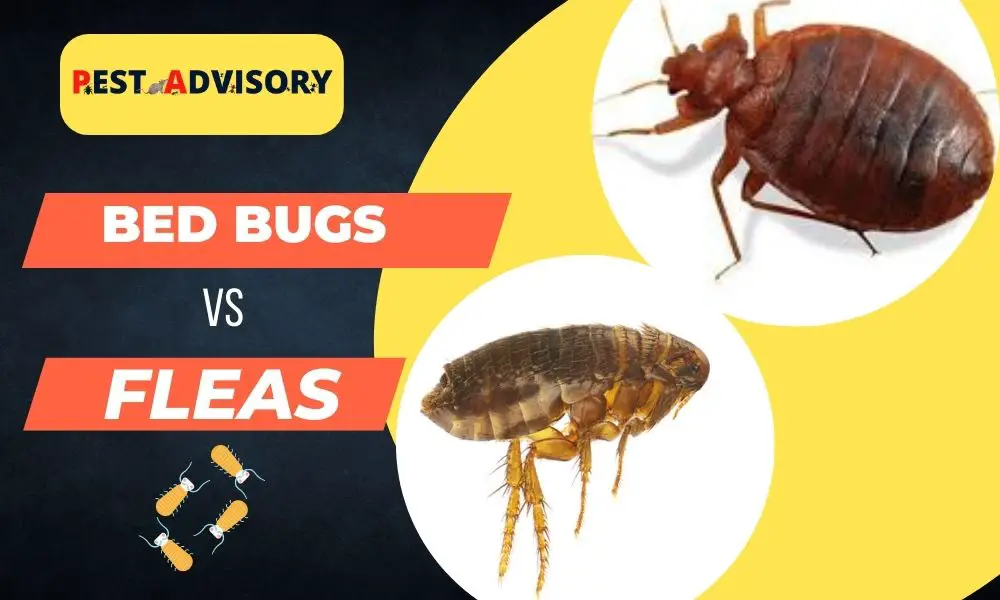Suffering from itchy and swollen insect bites can be annoying, especially when it happens constantly.
The best way to avoid future ones is to eliminate the pest that’s biting you. But how can we eliminate it if you don’t know which pest it is?
In this article, we’ll show you how to identify a flea from a bed bug based on its appearance, host, and movement. We’ll also discuss how to differentiate between their bites and their elimination methods.
Important Note: If you're tired of pests and want a reliable solution, then you should definitely consider seeking help from a professional pest control company. DIY solutions can be effective, but if you're dealing with a significant pest infestation, you don't want to rely solely on DIY methods. Pest control companies typically don't charge huge fees. You can fill out this form to receive free quotes from the top local pest control companies, and compare the quotes and see for yourself. Then, finally, your pest problems will be eliminated for good.
But first, let’s get to know what exactly fleas and bed bugs are.
What are Fleas and Bed Bugs?
Fleas are serious blood-sucking pests, which are known to spread several diseases. They are small and wingless creatures, generally feeding on the blood of mammals- animals or birds. Fleas are mostly identified as nocturnal insects.
Bed bugs are small (about the size of an apple seed), reddish-brown creatures that also feed on the blood of mammals-preferably humans. Similar to fleas, bed bugs are also mostly nocturnal. They infest homes, hotels, hospitals, or any other human lodgings.
Differences Between Bed Bugs and Fleas
Here are some factors based on which you can distinguish bed bugs from fleas.
Appearance
Even though both pests are reddish-brown and large enough to spot with the naked eye, bed bugs have flat seed-shaped bodies, while fleas have oval bodies. Fleas (1.5-3.3mm long) usually tend to be smaller than bed bugs (1.5-5mm long).
Host
Both fleas and bed bugs consume the blood of mammals. The difference is that bed bugs prefer biting humans, and only switch to animals if no human blood is available. On the other hand, fleas would usually feed on animals like cats, dogs, or birds, but may settle for humans when necessary.

Movement
This is the most noticeable difference between the two pests. Bed bugs go from one place to another by crawling slowly, they cannot jump or fly. Fleas have stronger hind legs than bed bugs and move around by leaping long distances.
How to Tell if You Have Fleas or Bed Bugs at Home?
People who notice insect bites may not necessarily have an infestation at home. You might get a bite from another lodging, or on your way back home, from any grassy or woody area. However, there is a fair chance that you might have brought the pest back to your home with you or your belongings.
Here, we are going to discuss how you can tell if the infestation we have is of bed bugs or fleas.
Signs of Bed Bug Infestation at Home
1) If you notice any tiny, dot-like, brown insects on your mattress, pillows, or sheets, it is likely to be a bug infestation
2) Bed bug exoskeletons may be lying near or on your bed in case of a bed bug infestation. These are crunchy looking and easily visible.
3) If you spot any tiny, rust-colored spots on your mattress or sheets, they are likely to be bed bug feces.
4) There may be a sweet or musty odor coming from your bedding.
Signs of Flea Infestation at Home
1) There may be tiny jumping insects visible in your home, or on your pets.
2) Clear or yellowish, tiny flecks of flea eggs may be visible on the fur of your pet.
3) Check your pet’s fur or their bed for dark black specks which could be flea feces.
4) There might be a significant change in your pet’s behavior in case of flea infestation. They are likely to become more itchy or anxious.
5) Check your pet’s health! Pets may develop anemia due to excessive flood loss from flea bites. In this case, the pet requires immediate medical attention.
How to Identify a Bug Bite from a Flea Bite?
It can be difficult to tell the difference between a bug bite and a flea bite since both leave a small group of reddish dots on your skin, but you can tell the difference using some tips.
- Flea bites are usually found on the lower part of your body and are more likely on moist and warm areas such as bends of elbows and knees. Bed bugs usually bite on the upper half of the body, around the face and neck, where more bare and hairless skin is available.
- Fleas will only bite you if any other animal is not available in your house, so if it’s just your pet suffering from bites, they are more likely to be fleas.
- Flea bites cause small, red, and itchy bumps, while bug bites are small, red spots that might not itch.
- Flea bites have a dark red center which could develop into itchy blisters. Scratching it can cause infection. Over time, bug bites produce a hard and white swelling that may bleed.
- Bed bug bites are noticeable because there are 3-4 bites in a line. Flea bites are usually present in clusters.
- Fleas can bite whenever they get the chance, however, bed bugs only feed approximately, once every three days, so, it is possible to note a regular pattern of bites in case of bed bugs.
Treatment for Bug Bites and Flea Bites

The first and foremost treatment for any bite will be to wash it thoroughly with soap and water.
For fleabites, you may apply an anti-itch cream. Avoid bathing with hot water as it can intensify the itching. In case of the development of an allergy, take an oral antihistamine to reduce the chances of an allergic reaction.
Bug bites usually go away in a week or two. Avoid scratching the bites and apply hydrocortisone cream or calamine lotion to ease the itching. Taking an antihistamine is a good idea for bug bites as well.
It is vital to see a doctor if you notice any severe symptoms in either case, like swelling, allergy, fever, or infection.
Treatment for Infestation of Bed Bugs vs. Flea
Getting rid of both pests can be challenging! Remember, there is a possibility that you might be dealing with both pests at your home at the same time.
To remove bed bugs
- Vacuum your house thoroughly.
- Launder your bedding in hot water and heat dry.
- Freeze your belongings in your freezer at a temperature of less than 40F.
- Steam your house completely.
To remove fleas
- Take your pet to a veterinary doctor, and get rid of any fleas attached to them. Bathe and dry them to kill the fleas.
- Seal all hiding places of fleas (except your pets of course!), for example, cracks in walls or furniture.
- Disinfect your home and clear the clutter.
- Call pest control if things get out of hand!
Final Words
Not only can pests spread diseases, but they can also indirectly affect your physical or mental health. Keep monitoring your house for signs of these pests to avoid them as soon as the problem starts.
Remember you must first know the problem to effectively deal with it so proper identification is necessary. Whether you have bed bugs or fleas, the only solution is to get rid of them as soon and as thoroughly as possible!

